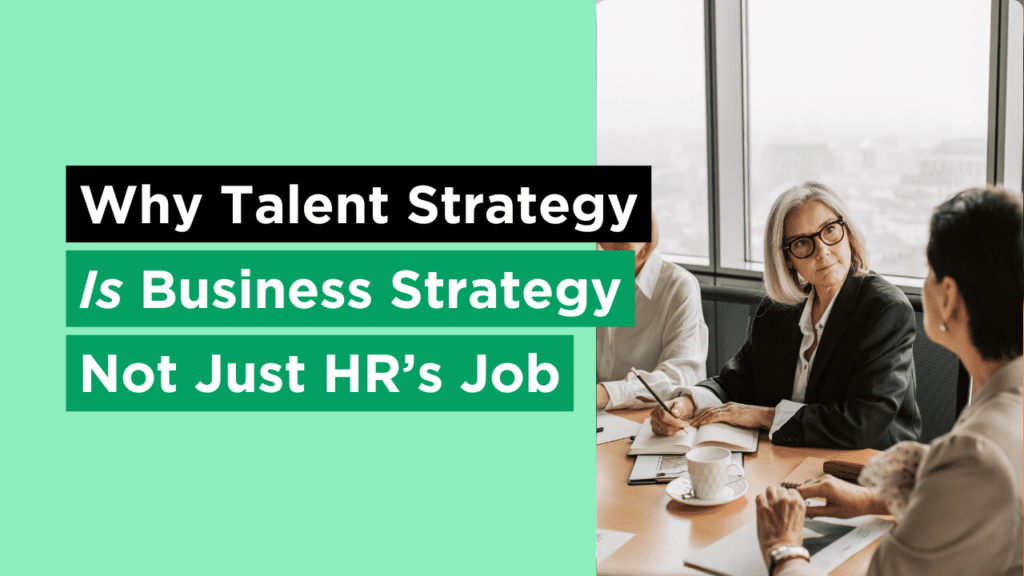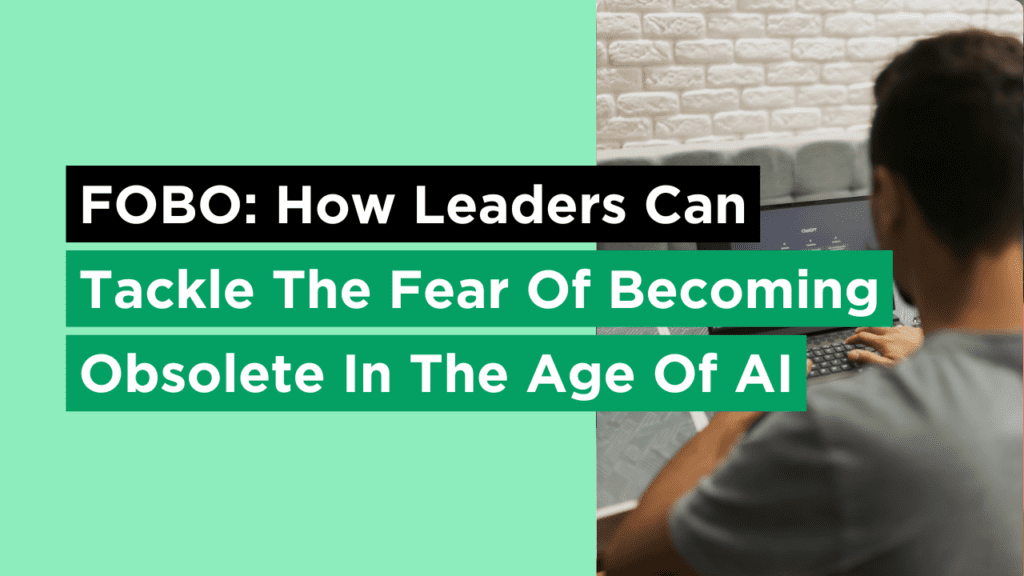To be the first to hear about our latest blogs, whitepaper releases, hiring enablement podcast episodes and get exclusive event invites, join our Exclusive Hiring Enablement Community.
If you’re looking to create a culture where all employees feel valued and included, you’re not alone. At Solutions Driven, we’re committed to promoting diversity and inclusion in all aspects of our work. And a US report by JUST Capital found that most employers (94%) and workers (74%) say their organisation’s committed to advancing their diversity, equity and inclusion (DE&I) efforts.
Diversity and inclusion have become vital workplace topics. But did you know that inclusive leadership is one of the most important aspects of developing an inclusive culture? In fact, in a recent white paper, we took a deep dive into how inclusive leaders are the secret to DE&I success.
So, what’s the role of an inclusive leader? And how can they make a difference in your organisation? Read on to learn more.
What’s inclusive leadership?
What’s inclusive leadership? And how do you recognise inclusive qualities within your senior staff?
Well, it can be defined as a leadership style that ensures all individuals – regardless of their background or identity – feel heard, respected, and valued. It goes beyond the traditional ‘managing’ of people – instead, inclusive leaders will actively seek out diverse perspectives and will openly create an environment where everyone can contribute their unique talents and experiences.
There are some great examples of leaders making an impact in well-known businesses, like Satya Nadella, CEO of Microsoft. According to the results of an annual survey from company review site, Comparably, Nadella was the top-rated CEO for his DE&I efforts based on employee reviews.
And Indra Nooyi, former CEO of PepsiCo, famously championed gender equality and diversity initiatives. In an article for Harvard Business review, she said,
“There is progress. I mean, the fact that there are more women in the workplace, more diversity in the workplace…But the problem is that you need the next generation of leaders to keep moving this agenda forward. It shouldn’t be an agenda that’s only driven by numbers.” Nooyi added, “…diversity is a numbers game, inclusion is a mindset. You can’t deal with the numbers without changing the mindset of the people to make people feel included, diverse people, women, people of color feel included.”
Inclusive leadership benefits
Having inclusive leadership in your organisation brings numerous advantages. Firstly, it improves employee engagement – individuals feel a sense of belonging and are more motivated to contribute their best. 60% of respondents in a LinkedIn study claim that diversity within their sales team has contributed to their teams’ success.
Secondly, it drives innovation through encouraging diverse perspectives and ideas. Forbes points out that “companies with above-average diversity produced a greater proportion of revenue from innovation (45% of total) than from companies with below average diversity (26%).
And let’s not overlook how inclusive leadership improves candidate attraction and employee retention. People Management published that 70% of candidates now expect transparency around diversity and 62% of employees state they’d reject a job offer if it came from an organisation without a diverse culture. As for retention, a study by Deloitte concluded that companies with inclusive cultures have much higher rates of employee retention and find it easier to recruit new employees than those without. Plus, staff turnover is reported as 22% lower in businesses with diverse teams than those without.
Who’s doing it well?
Who’s leading the way with DE&I initiatives? Not only promoting inclusion but reaping the benefits too. A few of our favourite examples include:
Jaguar Land Rover – With a traditionally male dominated workforce, the luxury car manufacturer noticed a lack of female candidates graduating with suitable engineering subjects to join their organisation. They also realised that 30% of the already small number of qualified female engineers left the profession before even starting in an engineering role.
Their solution? Jaguar Land Rover launched their Women in Engineering Sponsorship Scheme – a unique program to support the training of female engineers alongside their degree. Their efforts have seen an increase in the number of women joining the business with more than 20% of their graduate engineering hires now being female – that’ an overall increase of around 13%.
Novartis: Novartis’ believes it’s their diverse workforce that helps them to understand the unique needs of their patients and come up with innovative ways to meet those needs. The business comprises 147 different nationalities, is 51% female, with women making up 47% of their management team. The company also boasts 19 LGBTQI Employee Resource Groups across 15 countries and the pharma giant claims diversity is the secret behind their success.
Hannah Perry, Chief Diversity & Culture Officer, says, “The work we do in Diversity, Equity and Inclusion is about creating an environment where everyone feels they belong, where rocking our difference is valued, celebrated, and encouraged. It’s about consciously shaping our systems, structures, and behaviors so everyone at Novartis has what they need to thrive.”
Adobe: Adobe has an innovative mission when it comes to inclusion, focussing on four key areas: pipeline, employees, candidates, and industry. They state on their website: “At Adobe, we believe that when people feel respected and included, they can be more creative, innovative, and successful. While we have more work to do to advance diversity and inclusion, we’re investing to move our company and industry forward.”
Acknowledging the contributions of their employees who they describe as “agile, resilient, and uniquely capable of innovating to make an impact,” Adobe reports having made great strides towards their DE&I goals. They’ve been completely transparent in sharing their progress by publishing annual diversity reports and in 2021, won a total of 16 DE&I awards, celebrating their ongoing commitment to providing equal opportunities for all.
The impact of inclusive leadership on talent acquisition
Inclusive leadership plays a crucial role in talent acquisition and management. It not only shapes the way you hire but also influences your ability to attract diverse talent. Here’s how…
Inclusive leadership in your recruitment process
Essentially, inclusive leadership’s all about appreciating the unique experiences and perspectives of every individual. It emphasises open-mindedness, encourages an environment of respect, as well as a culture where everyone feels valued and heard. But how does this approach impact the recruitment process?
For starters, inclusive leaders recognise the importance of diversity within a team. They’re aware that a homogeneous team may be easier to manage but less likely to generate innovative ideas. So, they strive to recruit from a wide range of backgrounds, experiences, and skill sets.
Next up, inclusive leaders ensure that the recruitment process itself is free from bias. They implement practices such as blind recruitment (where irrelevant personal details are removed from applications to avoid unconscious bias). And they also ensure that job descriptions are written using gender-neutral language and that the selection process is based solely on merit.
Lastly, inclusive leaders create an environment where potential candidates feel welcomed. They communicate openly about the company’s commitment to diversity and inclusion, making it an attractive place for all sorts of talents.
Attracting diverse talent through inclusive leadership
Inclusive leadership plays a crucial role in attracting diverse talent. A diverse workforce is more than just ticking the compliance box; it’s a business asset. Companies with diverse teams are more innovative and perform better financially. And importantly, inclusive leaders get this!
That’s why they’ll actively seek out diverse talent and value the different perspectives and experiences these individuals bring. They’ll also create a culture of inclusivity, where everyone feels appreciated, respected, and part of the team.
You see, inclusive leaders aren’t just focused on hiring diverse talent; they’re also committed to retaining them, creating a sense of belonging – a powerful motivator for people to stay for the long haul.
And that’s why inclusive leadership is no longer just a nice-to-have; it’s a must-have! Can you afford to risk losing out on top talent and the many benefits that come with a diverse workforce?
Inclusive leadership practices
Keen to cultivate a culture of inclusion? It’s up to leaders to implement actionable inclusive leadership practices. Open communication, empathy, and active listening are essential components of inclusive leadership for creating an environment where individuals feel safe to share their thoughts and concerns, and to build trust and inclusivity. Leaders can develop these skills by seeking feedback, practicing empathy, and engaging in regular, open conversations with their team members.
If you’re looking to develop these skills either within yourself or your leadership team members, why not look for diversity training programs? You could also seek mentorship from existing inclusive leaders, or proactively seek out diverse perspectives in decision-making processes.
Overcoming challenges
Despite the many benefits of inclusive leadership, implementing it isn’t without its challenges. One common obstacle is resistance to change and employees happy with the status quo! Perhaps you’ve experienced a deeply ingrained culture that may not be entirely conducive to inclusivity?
But there are ways to overcome this; leaders should communicate the importance of diversity and inclusion clearly and consistently. And make it clear that inclusivity is not just a moral requirement but also a business one that drives innovation and performance. Again, this is where training programs can be helpful.
Solutions Driven provides this kind of training, equipping leaders with the skills and knowledge needed to create inclusive environments and nurture diverse talent. You can access our inclusive leadership training resources (workshops, webinars, and other valuable materials) through our website.
Another challenge is unconscious bias, which can influence decisions about who gets hired, promoted, or given opportunities. To tackle this, implement those blind recruitment practices mentioned earlier and provide bias training to employees.
One example of a company that’s successfully navigated these challenges is Accenture. The global consulting firm has made a significant commitment to inclusive leadership, setting bold diversity targets, and implementing a variety of initiatives to achieve them. These include comprehensive training programs, mentoring and sponsorship initiatives, and a strong focus on transparency and accountability.
Measuring inclusive leadership
We can’t overlook the importance of measuring and evaluating inclusive leadership; after all, it’s essential to drive continuous improvement. Use key performance indicators (KPIs) and metrics to assess progress. Think employee satisfaction surveys, diversity representation at different levels of the organisation, and retention rates among diverse talent.
However you choose to track your progress, it’s important that you do. Only then can you identify areas for improvement and make data-driven decisions to enhance your inclusive leadership practices.
We’ve highlighted that inclusive leadership plays a hugely important role in creating a diverse and inclusive workplace culture. It ensures that all individuals, regardless of their backgrounds, feel valued, respected, and included. And the benefits are clear; from improved employee engagement and innovation to enhanced talent attraction and retention.
At Solutions Driven, we’re passionate about promoting diversity and inclusion through our inclusive leadership training and recruitment services. Why not take a look at our services to find out how we could create a more inclusive workplace culture for your organisation, together?And don’t forget to download our white paper, Inclusive Leaders: The Secret to DE&I Success for more information on this topic. Are you ready to build a future where every individual can thrive and contribute their best work? Let’s get the ball rolling!






